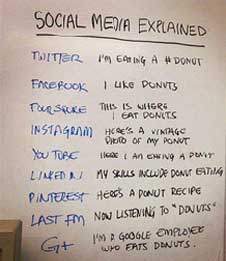
One way to ensure that your marketing funds are used efficiently is to create a strong target market analysis. This allows you to identify the crucial characteristics of your potential customers and use them to promote your products or services directly.
The tips below will help you come up with a target market analysis that will help you understand and dominate your niche.
1. Gather data
Determine who wants to buy from you by identifying who is already using your products or services. Define the characteristics of your current customer base and go after people who fit the same mold.
Gather any information you have on your existing customers in a database that allows you to track trends. The data points you should be considering are:
- Age – No need to be specific. Although it won’t make a difference whether your average customer is 27 or 34, knowing their generation is useful in determining which products or services they’ll be needing.
- Language – Never assume that your customers can speak the same language as you. Also, don’t assume that they speak the dominant language of their current location.
- Location – Where in the globe do your existing customers live? Knowing which geographic areas to target helps you figure out the hours that your customer service should be online and when to schedule your advertisements to ensure the best visibility.
- Purchasing Behavior – How much money do your customers currently spend on your products or services? Do they have particular concerns or preferences that need to be addressed?
- Interest – What other things do your customers like besides your product or services? What other businesses do they buy from or interact with?
- Stage of Life – Are your customers likely to be parents? Or are they teens whose interests change quickly?
If you’re selling B2B products or services, your categories will look a bit different. You may want to collect information on the following:
- Size of business: What types of businesses buy and interact with you? Are they SMBs or large corporations?
- Decision-makers: Are you targeting the marketing manager or the CEO?
2. Check out competitors
Once you better understand who’s buying your products or services. The next step is to look at your competitors and understand how they are marketing to your target market. Take a look at the competition to answer these key questions:
- How are competitors positioning themselves in the market?
- Are they going after the same customers as you are?
- Are they reaching customers that you aren’t considering?
- Do they have good reviews? What weaknesses do they have that you may be able to address with your products?
- How about pricing? Are their customers willing to pay more if something extra is offered?
If your competitor is doing well, you may not want to adapt to a similar market segment. However, if their customers are dissatisfied, it can be an excellent opportunity for you to compete head-on.
If you have a strong business judgment, you’ll be able to identify your competitors’ strengths and weaknesses and take advantage of new opportunities to drive success.
3. Take advantage of existing resources
A quick search online will lead you to existing resources that can help you gather information about your niche, market segment, competition, and potential customers. The great thing about this, it makes your job easier because someone already did the work.
You can use these tools to add more data to your research:
- Google Analytics offers web analytics services that give you tools to analyze the individuals that visit your website.
- Facebook for Business gives you a business account where you can manage Facebook ad campaigns, Additionally, you’ll also be provided a wealth of information about the people that visit your Facebook page and interact with your ads.
- Ahrefs is a tool for SEO and online marketing that helps you identify backlinks to any competitors. It also shows you which industries may be interested in your offerings.
- Google Trends helps you uncover where your target customers are usually located. It analyzes popular top search queries in Google Search across different regions and languages.
- Quantcast provides dependable audience insights, targeting, and measurement solutions to better understand and measure consumer behavior.
4. Make a target market statement
Gather everything you’ve discovered so far about your potential customers and compile it into a simple statement that clearly defines your target market. One great example is Zipcar’s brand positioning statement, which defines the target market:
“To urban-dwelling, educated, techno-savvy consumers who worry about the environment that future generations will inherit, Zipcar is the car-sharing service that lets you save money and reduce your carbon footprint, making you feel you’ve made a smart, responsible choice that demonstrates your commitment to protecting the environment.”
If you observe carefully, Zipcar is not targeting all the residents of a specific city. They have a particular target, and these are people who:
- are urban dwellers
- have a degree of education
- are proficient in the use of modern technology
- considers the environment
The list above shows the interests and behaviors that Zipcar is specifically targeting. It serves as a guide on the company’s marketing approach to its services, as seen in the rest of the statement.
When you craft your statement, try to include the most essential demographic and behavior of your customers. Example:
[Company Name]’s target market is [gender], [age range] years of age, who resides in [location] and loves to [activity].
Note: It’s not necessary to stick to these specific identifiers. For instance, gender may be irrelevant for your target customers, but you have 1-2 key activities to include in your statement. The goal is to put together all your research into a single statement that will guide your marketing efforts. If you offer multiple products, you may need to create a target market statement for each.
5. Review and apply your analysis
Don’t just create summaries, make projections. A target market analysis becomes of more value when it’s not just describing the present state of the market, but rather predicts or projects the future of your business. This will prepare your company for any shifts that may occur and affect your operations.
Are you creating a target market analysis for your client or your own company? Either way, you’ll be expected to provide recommendations. Looking at your analysis, ask yourself what steps would you suggest that the business will take going forward? Should they expand their target markets?
A target market analysis is useless unless the company will follow through on it. Once you complete the report, you need to know who should take action. You may be directly involved in the marketing efforts or hand it over to someone else. After some time, you should follow-up to find out whether there are changes made.
Make sure to incorporate the lessons you’ve learned from your target market analysis. Revisit your target market statements to ensure it still describes your potential customers. Remember, your target market will evolve, so always stay current with your target market definition as your products and audiences change.






